
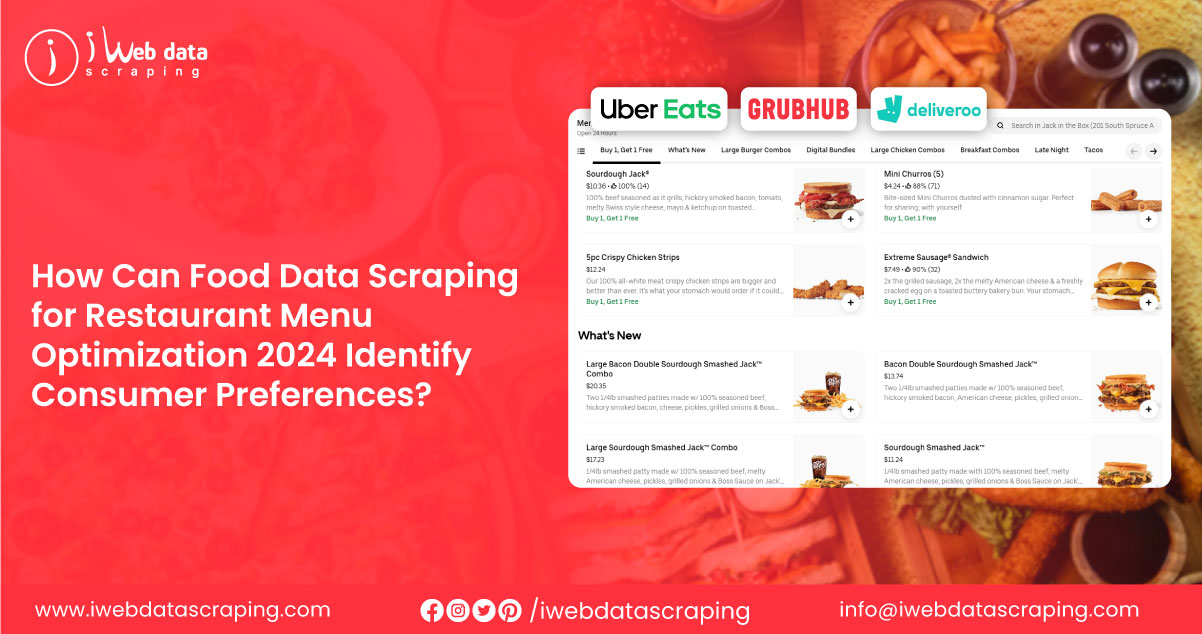
In the highly competitive food service industry, staying ahead of customer expectations and market trends is crucial for a restaurant's success. As diners become more discerning and the food delivery ecosystem continues to evolve, restaurateurs need to be agile and use data-driven approaches to stay competitive. One powerful tool for achieving this is food data scraping , which involves extracting valuable information from various food-related platforms to optimize restaurant menus.
The landscape of the restaurant industry is undergoing rapid transformation, particularly in the context of menu optimization. With the rise of online food delivery platforms like Uber Eats, Grubhub, and Deliveroo, restaurants have access to unprecedented consumer data. By leveraging food data scraping for restaurant menu optimization 2024, they can collect real-time data from these platforms, enabling them to make informed decisions on menu design, pricing, and product offerings. In 2024, this approach has evolved beyond just gathering basic data; it's now a critical component of restaurant menu optimization with data scraping and growth.
Using food data extraction for restaurant menu pricing, restaurants can fine-tune their pricing strategies, align with customer preferences, and stay ahead of the competition. This data-driven method allows restaurants to optimize their menu offerings, ensuring they meet their customers' demands while maintaining profitability.
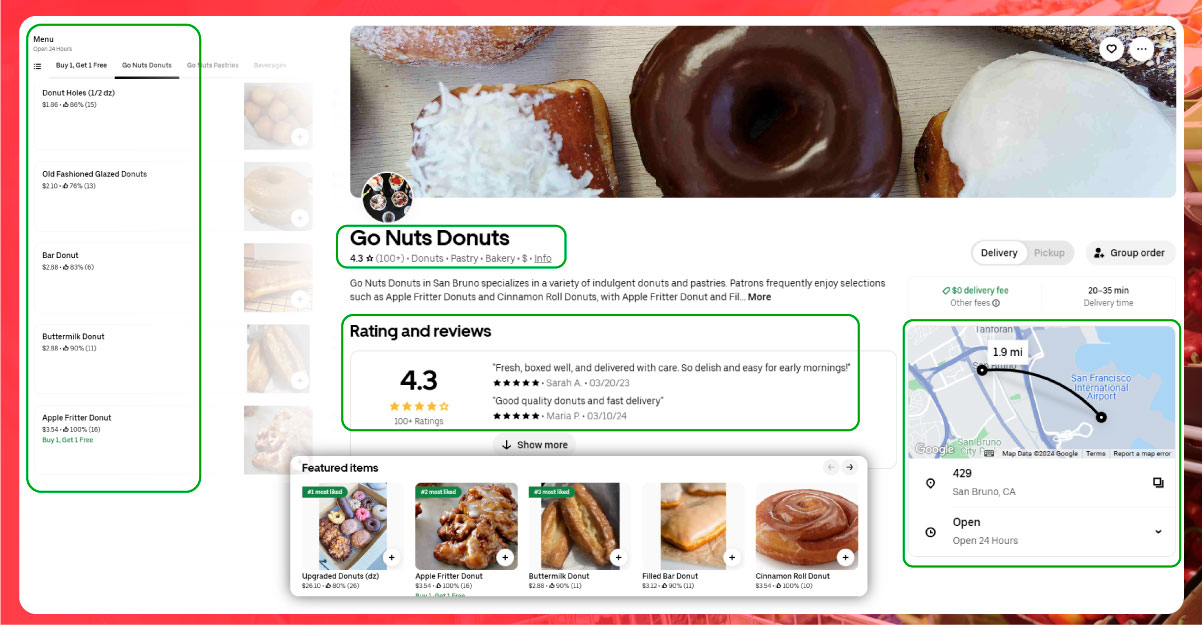
Food data scraping extracts relevant information from food-related websites, apps, and platforms. For restaurants, this could mean collecting data from competitors' menus, analyzing consumer feedback, monitoring pricing strategies, or tracking the popularity of specific dishes. This data can provide insights into customer preferences, emerging food trends, and competitor offerings. It can also identify gaps in the market that a restaurant can exploit to attract more customers.
In the context of restaurant menu optimization, food data scraping can help restaurateurs enhance their offerings based on what's trending in the market. Whether analyzing menu pricing strategies or tracking customer preferences for specific ingredients or dishes, scraping allows businesses to stay informed and adapt quickly to changing customer demands.
Web scraping restaurant menu pricing 2024 offers a comprehensive look at competitor pricing, helping restaurants adjust their prices for competitive advantage. Furthermore, restaurant price strategy data extraction can reveal effective pricing models and discount trends, allowing for better decision-making in menu optimization.
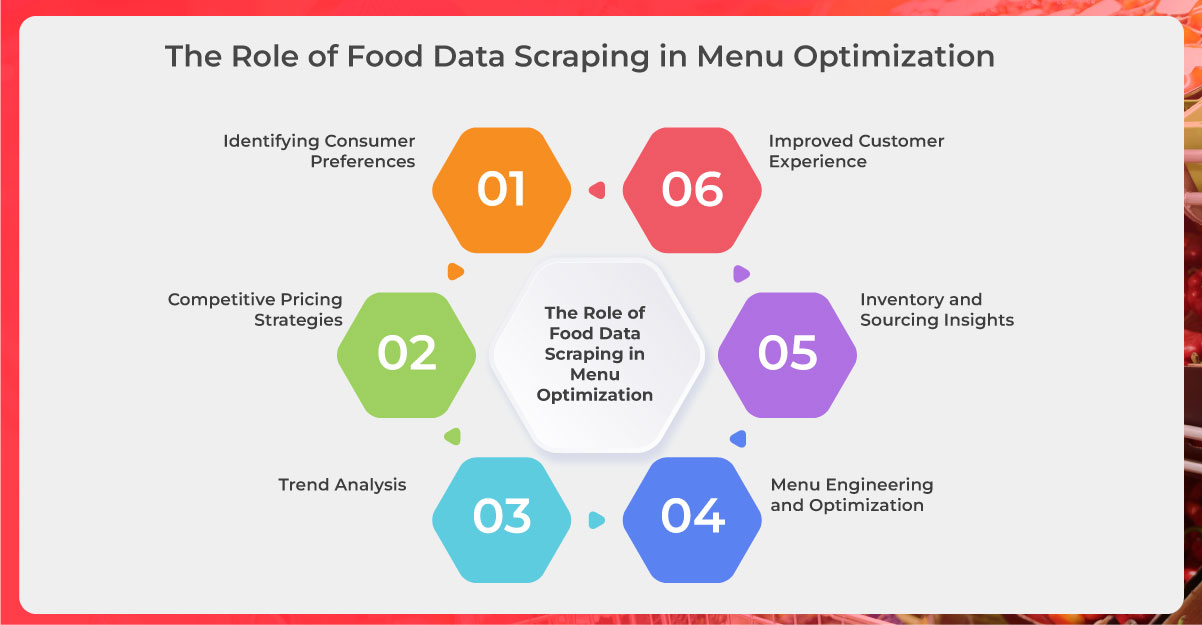
Menu optimization is one of a restaurant's most critical tasks in order to remain competitive. A well-designed menu can significantly impact a restaurant's profitability and the overall customer experience. Here are some ways food data scraping plays a pivotal role in this process:
In 2024, customers will be more health-conscious, environmentally aware, and focused on personalized experiences than ever before. Food data scraping allows restaurants to gather real-time feedback and insights into these evolving preferences. By extracting customer reviews, ratings, and comments from online platforms, restaurants can understand which dishes are popular and why.
For instance, if a particular vegetarian dish receives high praise, a restaurant might promote it more prominently or even introduce similar offerings. Additionally, it helps restaurants gauge seasonal preferences, such as which types of food are preferred during specific times of the year. This helps them adjust their menu to meet consumer expectations. Menu optimization with food data extraction ensures restaurants remain attuned to shifting consumer demands.
Pricing is a sensitive aspect of menu optimization. A menu that's too expensive may drive away customers, while one that's too cheap may hurt profitability. By using food data scraping, restaurants can gather insights into competitors' pricing strategies. Scraping data from local competitors or larger platforms helps restaurants see where they stand compared to others in the same market.
For example, if a restaurant notices that a competitor has recently lowered the price of a popular item, it may consider adjusting its prices to stay competitive. Alternatively, scraping data from platforms like Grubhub or Uber Eats allows restaurants to identify market trends, such as the rise of specific price ranges for delivery orders, and adjust their menu prices accordingly. Web scraping for menu planning in 2024 helps restaurants stay competitive in a rapidly changing market environment.For example, if a restaurant notices that a competitor has recently lowered the price of a popular item, it may consider adjusting its prices to stay competitive.
Alternatively, scraping data from platforms like Grubhub or Uber Eats allows restaurants to identify market trends, such as the rise of specific price ranges for delivery orders, and adjust their menu prices accordingly. Web scraping for menu planning in 2024 helps restaurants stay competitive in a rapidly changing market environment.
One of the most significant benefits of food data scraping is its ability to track emerging trends. Trends heavily influence the restaurant industry, whether it's plant-based diets, sustainability in sourcing, or the latest fusion cuisine. By scraping data from online platforms, restaurants can detect these trends early, allowing them to incorporate them into their menus before they become mainstream.
For instance, if food data scraping reveals that a growing number of people are looking for gluten-free or low-carb options, restaurants can adapt their menus to include more. Similarly, if plant-based foods or sustainability-driven products are gaining popularity, a restaurant can adjust its offerings to meet this demand. Menu optimization with food data scraping enables restaurants to capitalize on food trends and meet customer expectations quickly.
Menu engineering is designing a menu that maximizes profitability by strategically placing items based on their popularity and profitability. Food data scraping can give restaurants insights into which dishes perform well on competitor menus. By analyzing this data, restaurants can identify profitable dishes they might not have considered offering or introduce new variations of existing dishes.
Additionally, food data scraping can help identify less popular dishes that need to be removed from the menu or revamped. The data gathered can also highlight the trending ingredients or types of cuisines, enabling restaurants to create dishes that cater to these trends while maintaining profitability. Food delivery data scraping services can provide invaluable insights into how certain dishes perform on delivery platforms, assisting in effective menu optimization.
Inventory management is a key aspect of restaurant operations, and it's directly linked to menu optimization. By scraping food pricing data from platforms and suppliers, restaurants can make more informed decisions about sourcing ingredients. Food data scraping can help identify when prices for certain ingredients are rising or falling, allowing restaurants to adjust their menu pricing or switch suppliers accordingly.
For example, suppose a restaurant scrapes data and discovers that a specific type of fish is becoming more expensive. In that case, they may offer a more cost-effective alternative or adjust the pricing of their dishes accordingly. This ensures that restaurants can keep their menus profitable and adaptable to changing market conditions. Food delivery app menu datasets provide detailed pricing and inventory insights that can help optimize menu offerings in line with supplier trends.
Personalizing the customer experience is a key factor in restaurant success. By scraping customer feedback from food delivery platforms or restaurant review websites, restaurants can gauge the effectiveness of their menu items. Positive reviews can highlight popular dishes that deserve more prominence, while negative reviews may point to areas where improvement is needed.
Furthermore, scraping data on customer demographics (age, location, food preferences) can help restaurants tailor their menu items to suit specific audiences. For example, a restaurant located in an area with a younger demographic may offer more adventurous, trendy menu items. In contrast, a family-oriented restaurant may focus on comfort food or affordable, family-sized meals. Restaurant menu data scraping services can help restaurants leverage customer feedback to optimize their offerings and improve their dining experience.
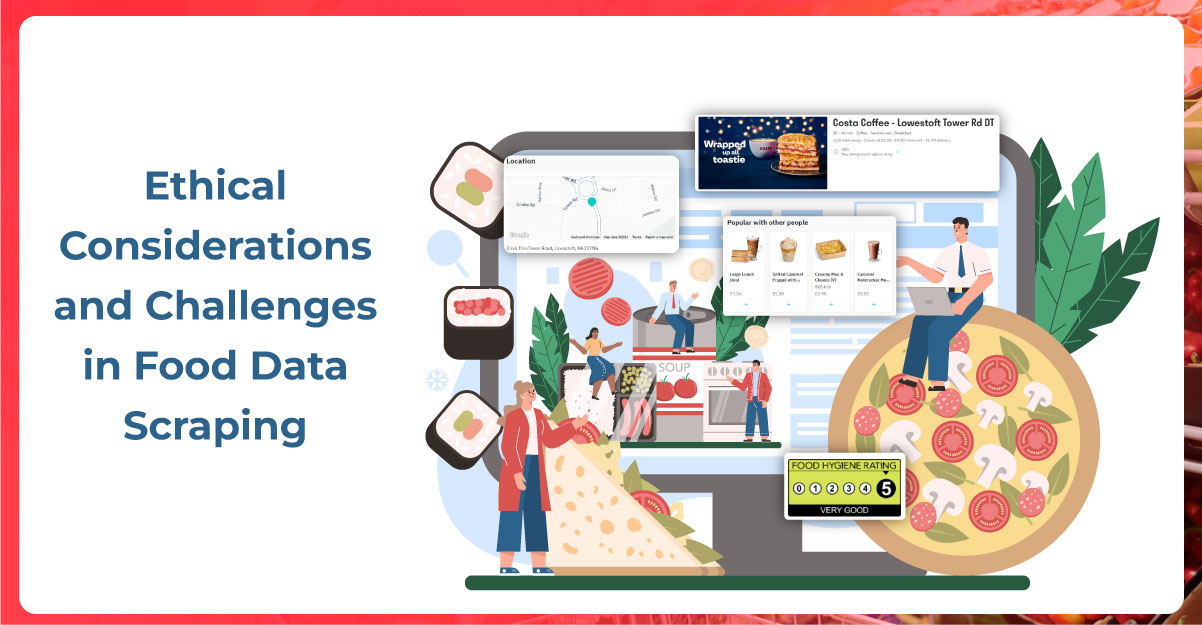
While food data scraping offers many benefits, restaurants must consider legal and ethical considerations. Not all websites or platforms permit scraping, and businesses must respect the sites' terms and conditions. Additionally, scraping large volumes of data can overload a site's servers, so it's important to use respectful scraping practices.
To ensure compliance, restaurants should use web scraping tools designed to work within the legal framework and avoid harming the platforms they scrape from. For instance, instead of scraping every page on a website, businesses can focus on gathering only the most relevant data, such as menus, reviews, and product offerings.
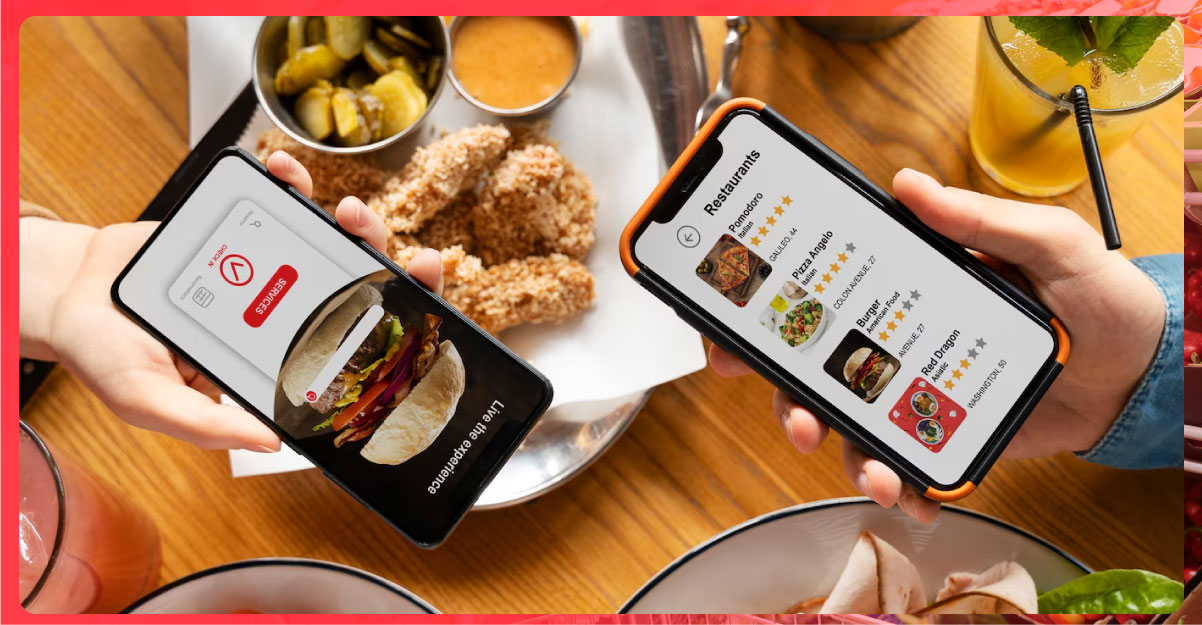
Food data scraping will play an even more significant role in menu optimization as the food industry evolves. With the increasing integration of AI and machine learning, data scraping tools will become more advanced, enabling even deeper insights into customer behavior and preferences.
In the future, restaurants may use food data scraping to gather and analyze data from various sources, such as social media platforms, food blogs, and recipe websites. AI-powered tools will help automate the analysis of this data, providing real-time insights and helping restaurants adapt quickly to market changes.
Food data scraping has become an indispensable tool for restaurant owners looking to optimize their menus and stay ahead of the competition. By leveraging data from various platforms, restaurants can make informed decisions about pricing, menu design, customer preferences, and emerging food trends. As the restaurant industry becomes increasingly competitive, data-driven approaches like food data scraping will enable businesses to optimize their menu offerings and deliver exceptional customer experiences that keep diners coming back for more.
Experience top-notch web scraping service and mobile app scraping solutions with iWeb Data Scraping. Our skilled team excels in extracting various data sets, including retail store locations and beyond. Connect with us today to learn how our customized services can address your unique project needs, delivering the highest efficiency and dependability for all your data requirements.